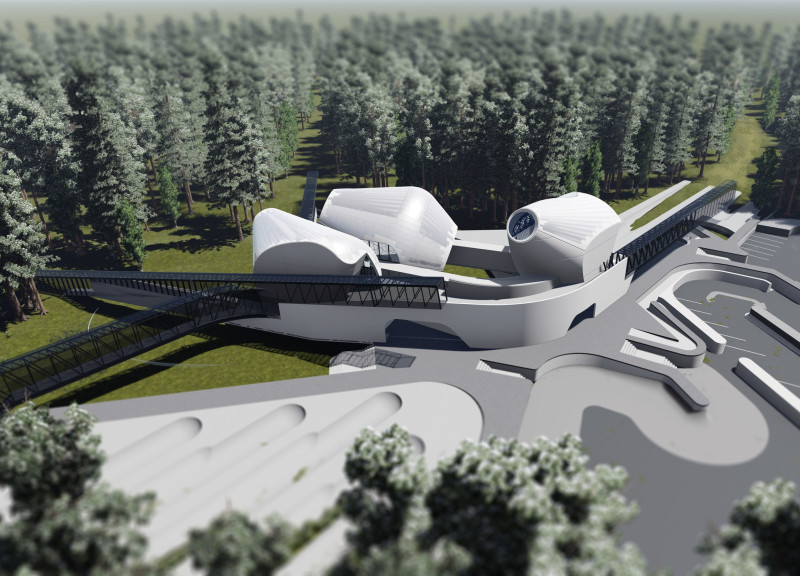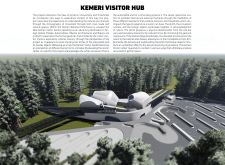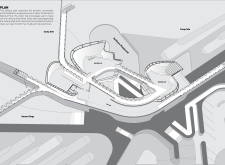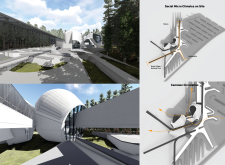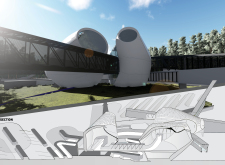5 key facts about this project
The primary function of the Kemeri Visitor Hub is to serve as a central point for visitors to the national park. It provides essential services and amenities, including exhibition spaces, educational areas, information centers, and outdoor activities. This multifunctionality reflects a commitment to promoting environmental sustainability and encourages visitors to appreciate the natural beauty of Kemeri. The structure is strategically designed to not only house these services but to seamlessly integrate with the park's ecosystem.
Architecturally, the design embodies a blend of organic forms and practical considerations. The building utilizes curvilinear shapes that resonate with the natural elements of the park, echoing the organic patterns found in the surrounding landscape. This approach aids in reducing visual disruption and fosters a harmonious relationship between the built environment and nature. The visitor hub’s elevated plinth serves a dual purpose: it enhances visibility of the park’s features and minimizes ground-level disruption, allowing native vegetation to thrive.
One of the unique design approaches of this project is its emphasis on integrating circulation pathways that connect various areas, facilitating an immersive experience for visitors. These pathways are crafted using materials such as glass and steel, which allow for transparency and visual lightness. By employing extensive glass panels, the design ensures unobstructed sightlines and a constant connection to the environment outside. This transparency not only enhances the visitor experience but also encourages an awareness of the changing natural scenery throughout the seasons.
The material palette of the Kemeri Visitor Hub plays a crucial role in emphasizing the project's relationship with nature. With concrete serving as the primary structural element, it provides the necessary durability for a building intended for public use. The inclusion of wood in finishes and detailing offers warmth and a tactile connection to the earth, complementing the overall aesthetic of natural integration.
Furthermore, the Kemeri Visitor Hub incorporates various features intended to facilitate social interactions among visitors. Design elements such as communal gathering spaces, observation decks, and play areas for children invite diverse groups to engage with the site actively, promoting a sense of community and collective appreciation for the natural surroundings. The thoughtful organization of spaces encourages both individual exploration and shared experiences, enhancing the educational aspect of their visit.
In essence, the Kemeri Visitor Hub is a meaningful architectural endeavor that balances usability with the preservation of the landscape. It showcases a responsive design philosophy that honors the nuances of the natural environment while providing essential services to its users. The project invites architectural dialogue and represents a forward-thinking approach to visitor centers in natural settings.
To gain a deeper understanding of the architectural plans, sections, designs, and ideas that informed this project, readers are encouraged to explore the detailed presentation of the Kemeri Visitor Hub. This examination will provide further insights into the innovative approaches taken within this architectural project and how they contribute to the overall experience of Kemeri National Park.


